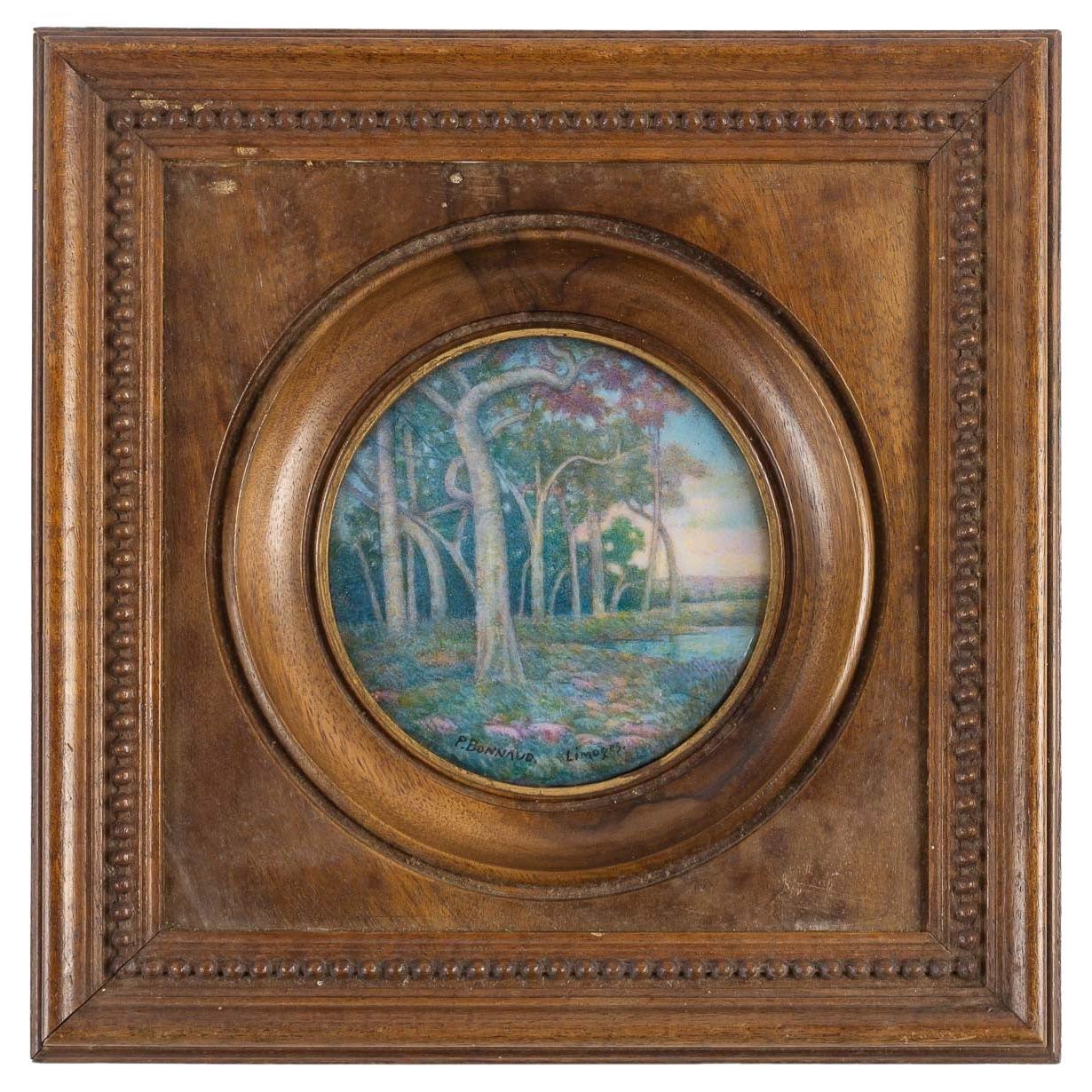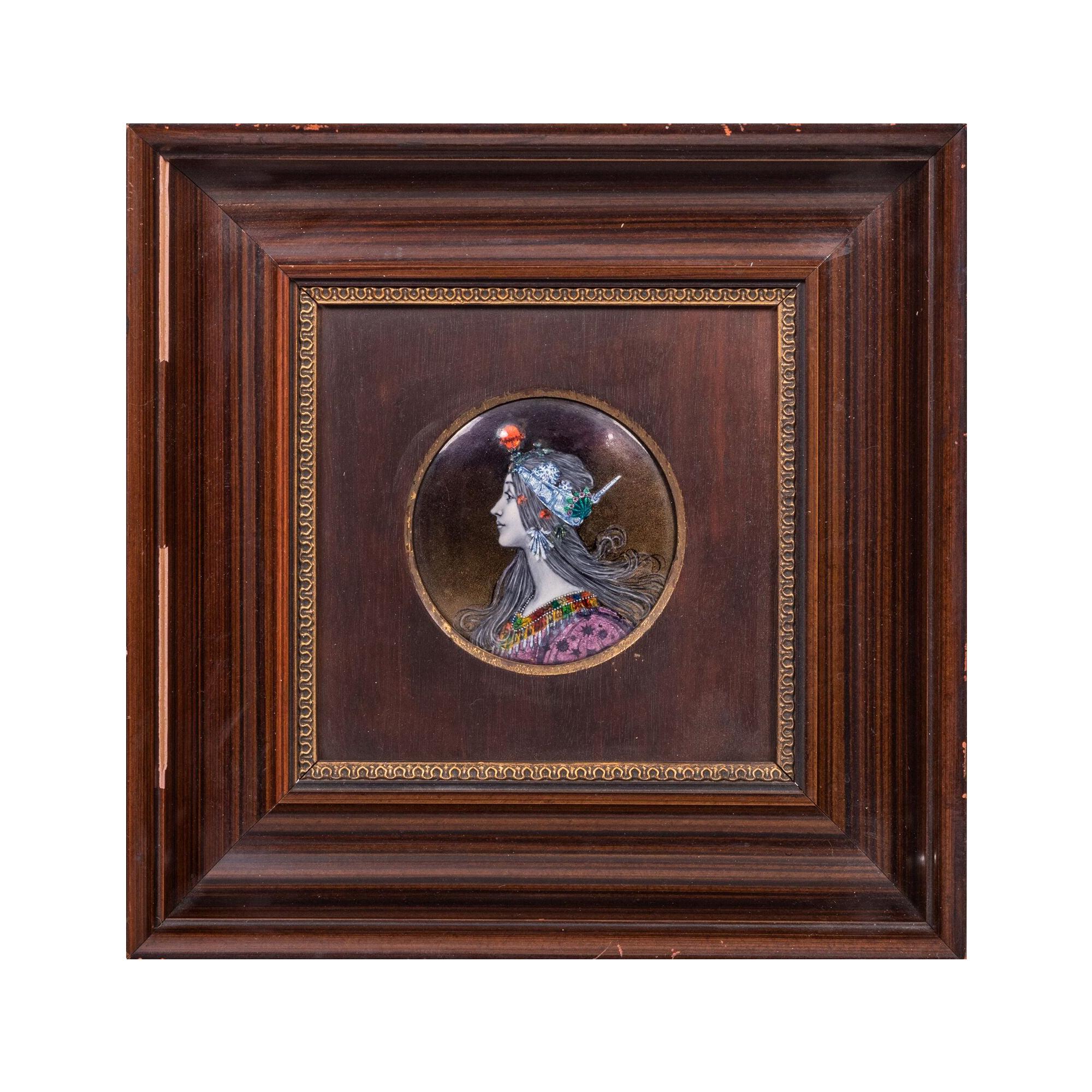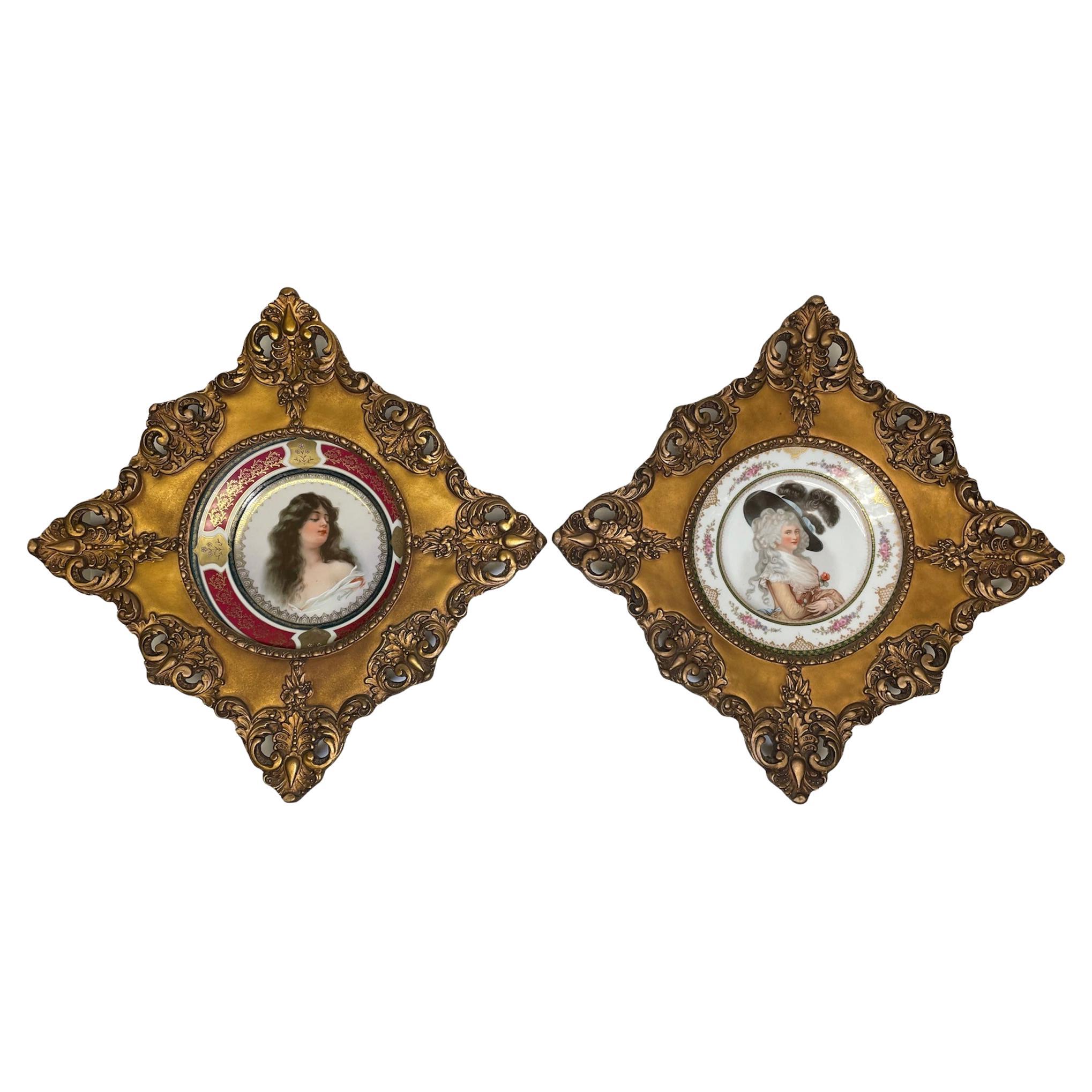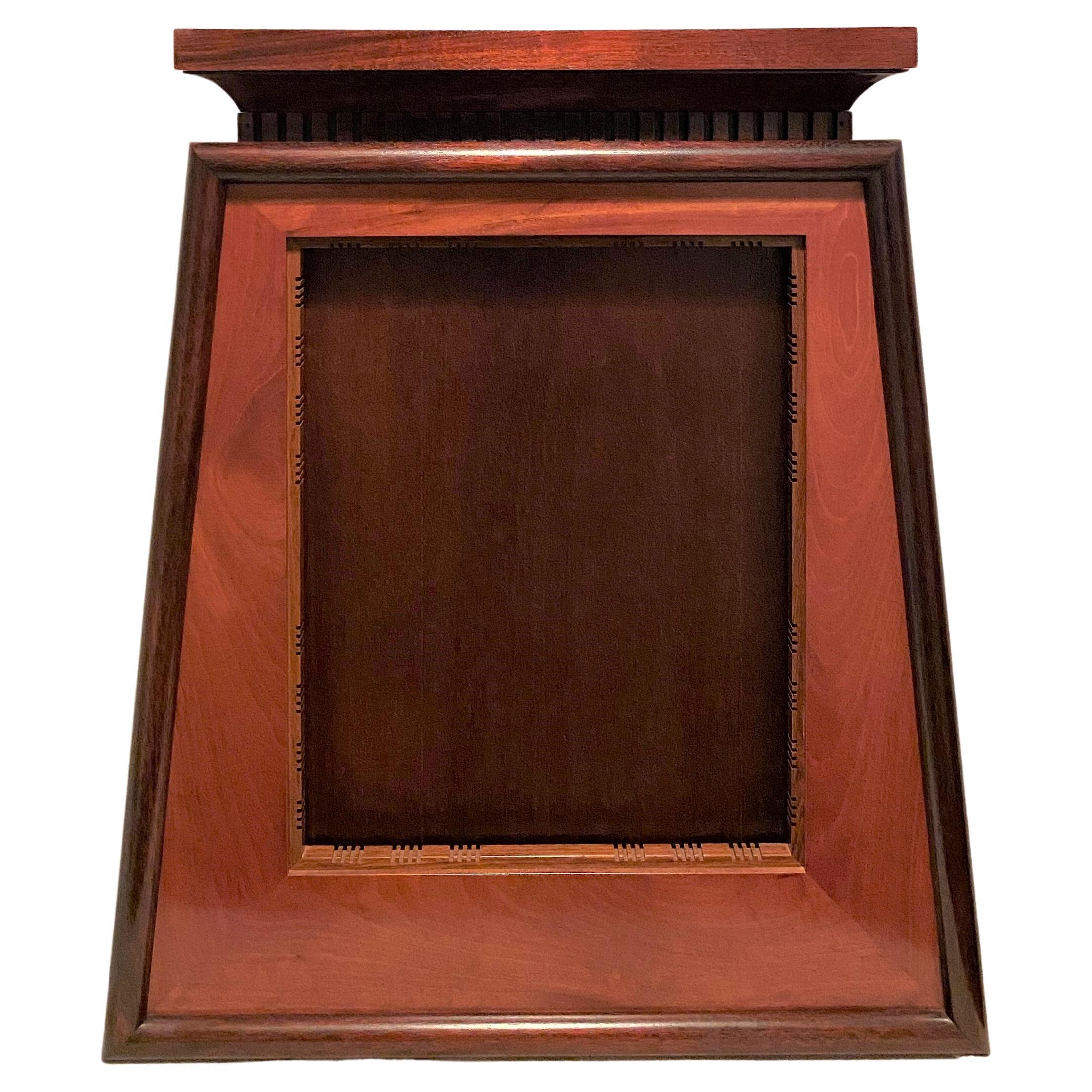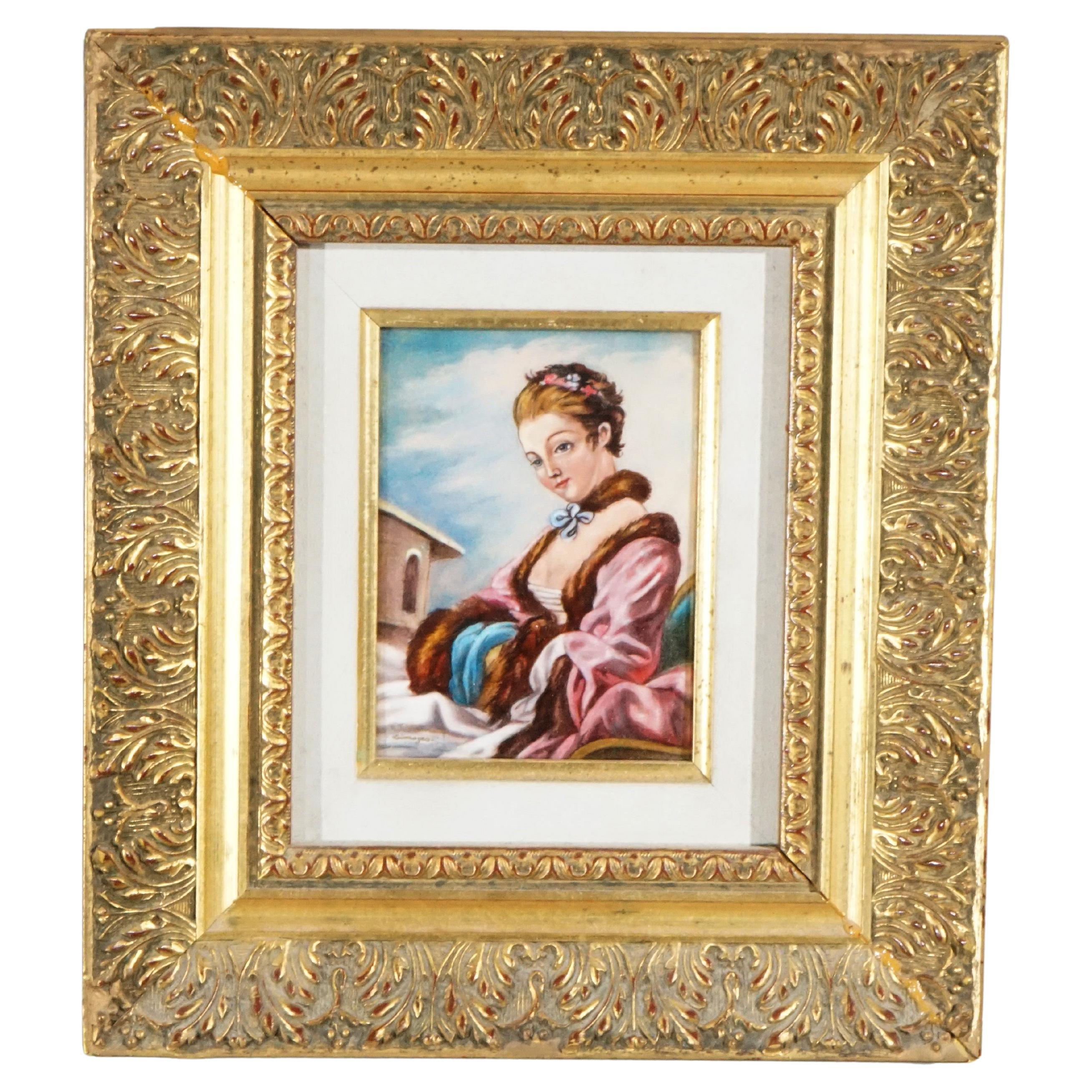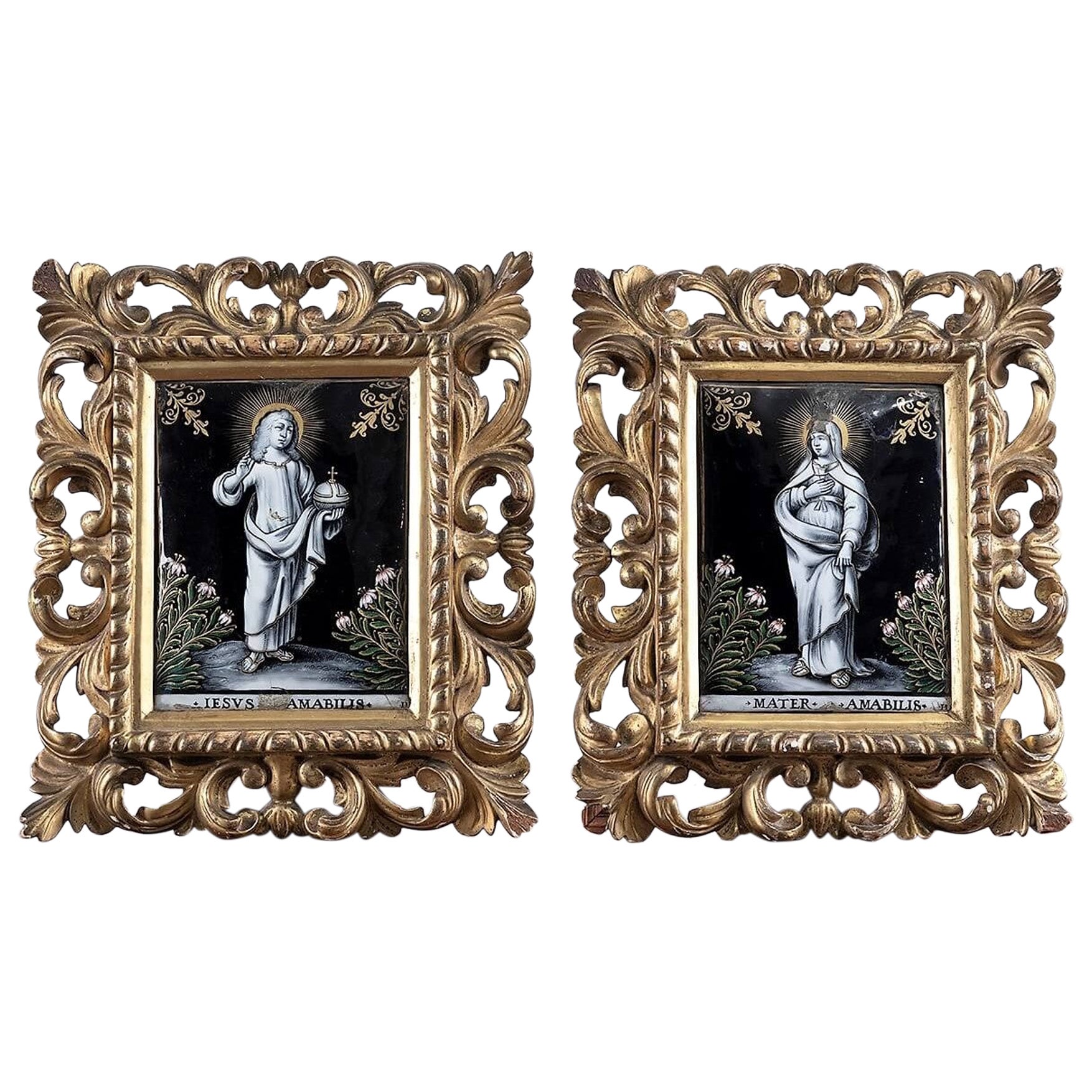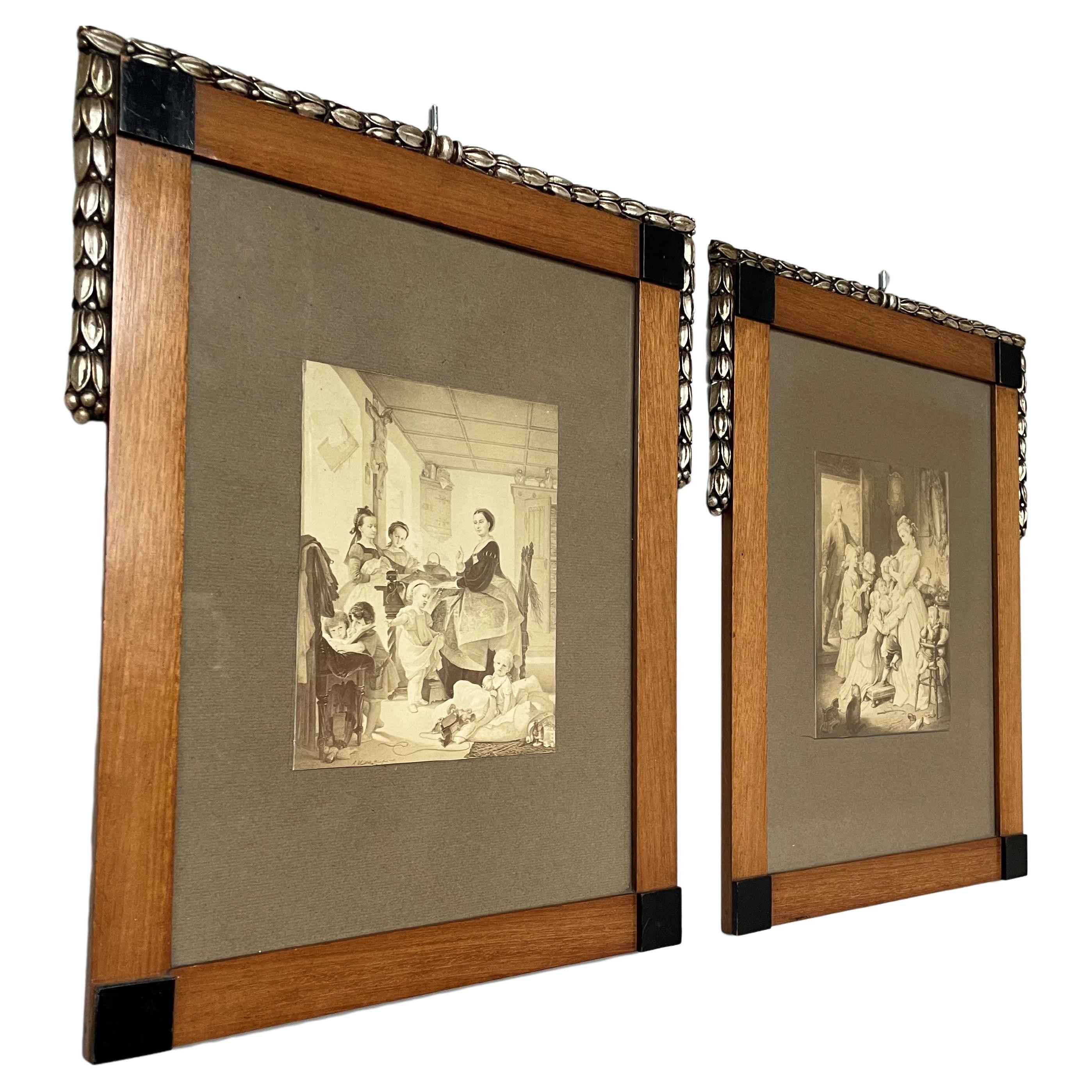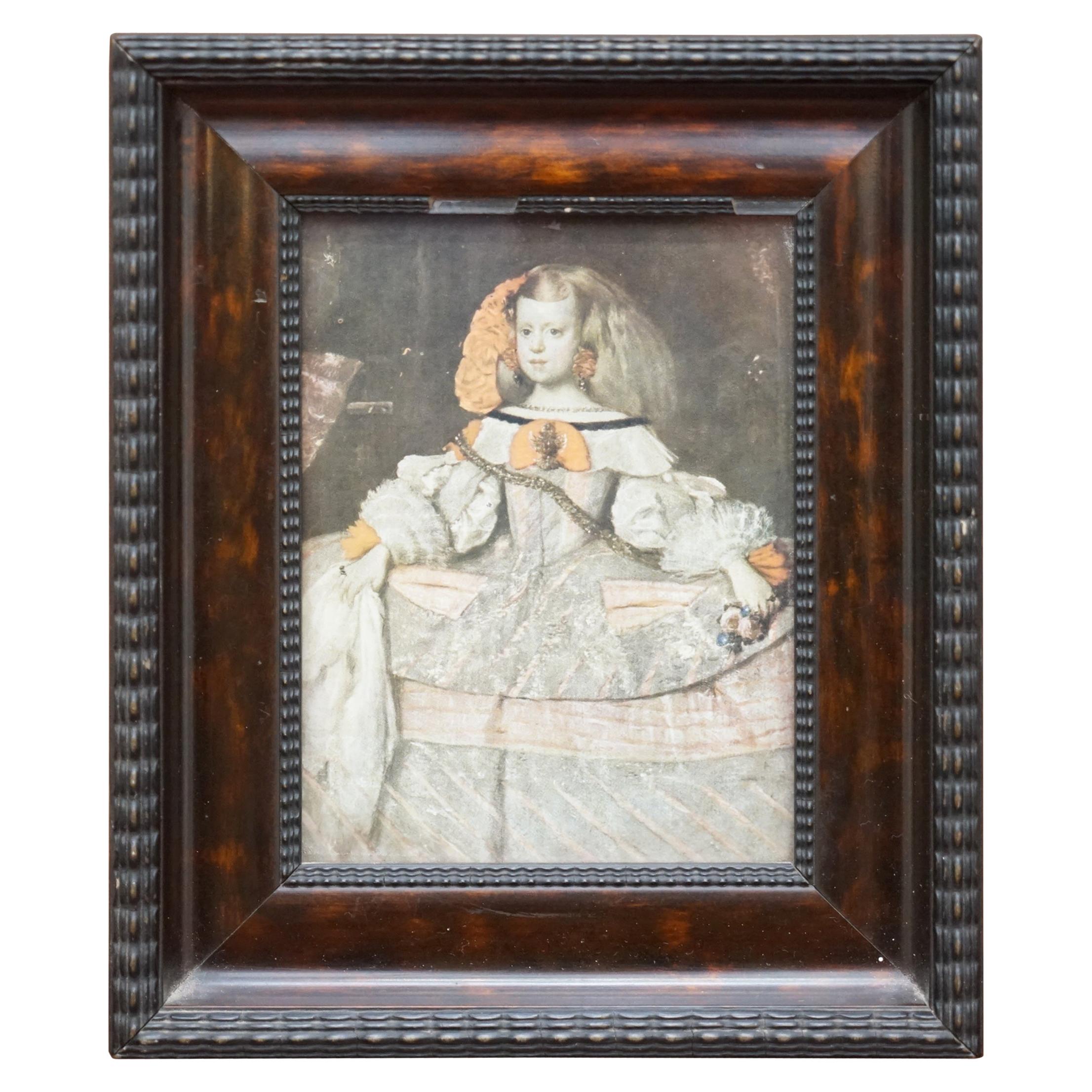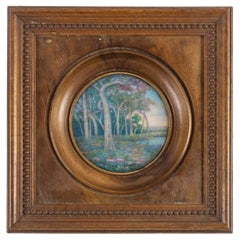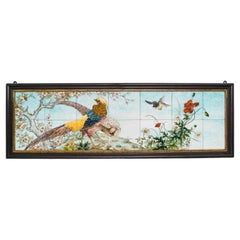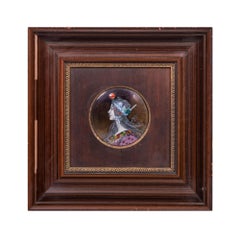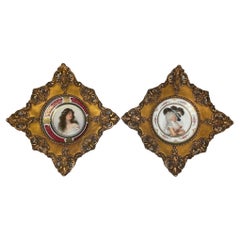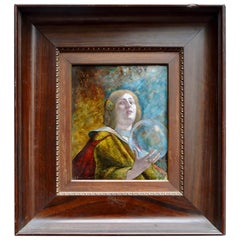
Paul Bonnaud "Vanitas" A Limoges Polychromed Enamel Plaque
View Similar Items
Want more images or videos?
Request additional images or videos from the seller
1 of 7
Paul Bonnaud "Vanitas" A Limoges Polychromed Enamel Plaque
About the Item
- Creator:Paul Bonnaud (Artist)
- Dimensions:Height: 20.48 in (52 cm)Width: 16.93 in (43 cm)Depth: 1.97 in (5 cm)
- Style:Renaissance Revival (Of the Period)
- Materials and Techniques:
- Place of Origin:
- Period:1900-1909
- Date of Manufacture:circa 1910
- Condition:Wear consistent with age and use.
- Seller Location:Saint-Ouen, FR
- Reference Number:1stDibs: LU2612321985422
About the Seller
4.9
Vetted Seller
These experienced sellers undergo a comprehensive evaluation by our team of in-house experts.
1stDibs seller since 2017
56 sales on 1stDibs
Typical response time: 1 hour
More From This SellerView All
- Paul Bonnaud (1876 - 1953) Symbolist Art Nouveau Enamel "Landscape" , c.1900By Paul BonnaudLocated in Saint-Ouen, FRPaul Bonnaud (1876–1953), Limoges “Trees by a Lake” Symbolist Art Nouveau Landscape A circular polychromic enamel plaque. In a carved varnished wood frame Signed and located Limoges Circa 1900 Paul Bonnaud was a master enameler in Limoges at the beginning of the 20th century, he belongs, with Jules...Category
Antique Early 1900s French Art Nouveau Decorative Art
MaterialsEnamel
- Théodore Deck (1823-1891) Faience Paneled Fourteen-Tile Rectangular Wall PlaquBy Theodore DeckLocated in Saint-Ouen, FRA Théodore Deck (1823-1891) Faience Paneled Fourteen-Tile Rectangular Wall Plaque Polychromic Earthenware very finely hand-painted, designed with a couple of pheasants among vegetat...Category
Antique 1870s French Japonisme Decorative Art
MaterialsFaience, Wood
- Theodore Deck '1823-1891', a Japonisme Polychromed Faience Quadrangular VaseBy Theodore DeckLocated in Saint-Ouen, FRTheodore Deck (1823-1891) A Polychromed Faience quadrangular vase, decorated in a cartouche with butterfly and birds on branches of prunus and peonies in the Japanese Taste on a pu...Category
Antique Late 19th Century French Japonisme Vases
MaterialsFaience
- A French Napoleon III Large Pair of Orientalist Porcelain Plaques, 1908By Rudolf ErnstLocated in Saint-Ouen, FRA French Napoléon III Large Pair of very decorative hand-painted polychromed Porcelain Plaques with Orientalist scenes, with traditional costumed characters. In the manner of Rudolf ...Category
Antique Early 1900s French Napoleon III Paintings
MaterialsPorcelain, Wood
On Hold$7,425 / set - Diana the Huntress, 19th Century French Enamel TazzaBy Théophile SoyerLocated in Saint-Ouen, FRDiana The Huntress A 19th century French Enamel Tazza Tazza with scalloped edges in polychrome enamel, painted on copper with red background and gold highlights representing Diana the Huntress painted partly in grisaille; translucent and red counter-enamel. Paris, Théophile Soyer (1853-1940) circa 1880 Théophile Soyer (23 July 1853-20 February 1940) His father, Paul Soyer, gold medalist in 1878, created after the 1870 war the famous work-shop at 4 bis, rue Saint-Sauveur in Paris, which produced innumerable pieces, including some for jewellery, furniture and bronze. Théophile took classes with Yvon and Levasseur and made his debut at the 1870 Salon with an enamel copy of a work by Le Barbier aîné. He then exhibited regularly from 1875 to 1882. After his marriage in 1879 to Léa, née Dejoux, nicknamed Lucie, a pupil of Lamunière, he shared the management of the firm with her, just as he shared the gallery in her company at certain exhibitions. He won a silver medal at the Universal Exhibition of 1889, then a gold medal at the one in 1900. He was president of the Société des éclectiques, a humorous society founded in 1872, and vice-president of the Chambre de la céramique et du verre de l'Union. Founded in Paris during the Second Empire, the workshop directed by Paul Soyer (1832-1903) and then his son Théophile (1853-1940) produced various objects, paintings, mirrors, trays, vases, bonbonnières. Based on new sources of information, an article in l’Objet d’Art magazine, publications Faton, presents an update of the Soyer biographical elements and an analysis of their production marked by the neo-Renaissance and then Art Nouveau. A book of accounts allows us to observe the models of enamel "paintings", often from Meissonier’s work. The Soyers have greatly contributed to satisfying the taste of painted enamels that grew from the 1860s to the 1900 exhibition...Category
Antique 1880s French Napoleon III Decorative Dishes and Vide-Poche
MaterialsCopper, Enamel
- A Théodore Deck (1823-1891) Enamelled Faience Soliflore Vase circa 1875By Theodore DeckLocated in Saint-Ouen, FRThéodore DECK (1823-1891) A polychromatic enamelled earthenware soliflore and quadrangular shape vase with Sino-Japanese inspiration design of flowers and geometrical friezes all around. Impressed uppercase mark "TH.DECK" under the base. Circa 1875 Born in Guebwiller in Alsace, Théodore Deck trained as a ceramist in his home region, then in Germany. He went into partnership with his brother, Xavier Deck, to create his own factory in Paris in 1858. At the Exhibition of Industrial Arts in 1864, he presented pieces covered with transparent enamels that were not cracked, and then made his first attempts at reliefs under transparent enamels. He developed a bright turquoise color, famously renowned as "Bleu Deck". It is this nuance that we find on the salamander represented on this vase. In 1887 he published a treatise entitled "La Faïence", in which he explained some of his discoveries. That same year, he became director of the Manufacture de Sèvres. Theodore Deck (1823-1891) is a French ceramist born in Guebwiller in Alsace. He is passionate about chemistry and the physical sciences. In 1841, he joined the master stove maker Hügelin father as an apprentice in Strasbourg. In two years, he learned of the methods inherited from the 16th century, such as the encrustation of colored pastes in the style of Saint-Porchaire. This apprenticeship did not prevent him from spending his free time draw-ing or modeling clay in the studio of sculptor André Friederich. Escaping military service, he made a tour of Germany as is the tradition with fellow Alsatian stove-makers. The quality of his work allows him to obtain important orders in Austria for the castles of the provinces and the imperial palaces, in particular for the palace of Schönbrunn. He continues his journey in Hungary to Pest, to Prague, then, going north through Dresden, Leipzig, Berlin and Hamburg. On the strength of his apprenticeship, he arrived in Paris in 1847. Recommended by Hügelin, he went to the stove factory of the Bavarian potter Vogt, located rue de la Roquette. The Revolution of 1848 interrupts production and Deck decides to return to his hometown. His family then advised him to set up a small terracotta workshop: he made a few busts, statuettes, vases, lamps and copies of famous antiques there. Aware that this situation would not allow him to provide for himself properly, he returned to Paris in 1851 where he was employed by the widow Dumas, daughter of the earthenware maker Vogt for whom he had worked. Hired as a foreman, he supplied the drawings and models to the workers, while working the land himself. The following year, he made the decision to settle not far from his former employer at 20, rue de la Fontaine-au-Roi, probably using his ovens. His brother, Xavier Deck, joins him. It was officially in 1858 that the Deck brothers created their business and settled in Paris at 46, boulevard Saint-Jacques. Initially, the brothers only carry out coatings for stoves. But the business is going so well that barely a year after their installation, they want to diversify their production and engage in ceramics for the cladding of buildings as well as in shaped parts. Deck is interested in politics. In 1870, he opted for French nationality and was elect-ed deputy mayor in the 15th arrondissement of Paris. In 1861, at the Salon des arts et industries de Paris, which was held on the Champs-Élysées, Théodore Deck exhibited his works for the first time: these were pieces with an inlay decoration called “Henri II” and others. pieces covered with turquoise blue enamel or decoration in the style of Iznik ceramics.If he wins a silver medal, reviews are mixed, however. The following year, on the occasion of the Universal Exhibition of 1862 in London, he won over English customers. He surprised by presenting, like the previous year, his Alhambra Vase...Category
Antique 1870s French Japonisme Vases
MaterialsFaience
$4,739 Sale Price30% Off
You May Also Like
- French Limoges Enamel Portrait Plaque Depicting Catherine de MediciLocated in West Palm Beach, FLA French Limoges enamel portrait plaque depicting Catherine de Medici, 19th century contained in an ebonized frame monogrammed and dated to the r...Category
Antique 19th Century Paintings
MaterialsEnamel
- Pair of Limoges and Royal Vienna Porcelain Portraits Gilt Framed PlatesBy Limoges, Royal Vienna PorcelainLocated in Guaynabo, PRThis is a pair of hand painted porcelain plates. One of them is depicting a portrait of Marie Antoinette- the last queen of France before the French Revolution. She is holding a rose. The rim is adorned with bouquets of roses and foliages. Below it, there are some gilt trellis patterns and under it a green band with golden stars. The plate has a large gilt gesso squared frame decorated with acanthus leaves pattern in its corners. The plate is hallmarked GDA Limoges...Category
Antique Late 19th Century Austrian Rococo Picture Frames
MaterialsPorcelain
- French Troubadour School Flat Rest In Copper 19th Century - FranceLocated in Beuzevillette, FRPretty embossed copper plate representing a tavern scene in the style of the 16th century. In a renaissance interior four men are drinking, three of them lift their cups, the fourth,...Category
Antique Mid-19th Century French Renaissance Revival Decorative Art
MaterialsCopper
- Empire Style Handcrafted Wall Picture Frame with Figural Bronze OrnamentsLocated in Lisse, NLRare and beautifully crafted patinated nutwood picture frame or mirror with original glass panels. There is something about antique home accessories...Category
Early 20th Century French Empire Revival Decorative Art
MaterialsBronze
- Neo Egyptian Two Tone Solid Mahogany & Rosewood Picture / Mirror FramesBy Dana NicholsonLocated in New York, NYTwo (of four) designed and handmade frames by Dana Nicholson at Altura Studio in New York. Solid Mahogany and rosewood assembled in a heavy torsion box method. Custom cast brass fitt...Category
Vintage 1980s American Egyptian Revival Decorative Art
MaterialsBrass
- French Limoges Enamel on Copper Portrait Painting of a Woman, 20th CBy LimogesLocated in Big Flats, NYA French Limoges painting offers enamel on copper portrait of a woman in outdoor setting, seated in giltwood frame, 20th century. Measures- 10.5'' H x 9.5'' W x 1.75'' D; 2 sites;...Category
20th Century French Paintings
MaterialsCopper
$440 Sale Price20% Off
Recently Viewed
View AllMore Ways To Browse
Enamel On Copper Wall Art
Old Limoges
Copper Enamel Plaque
Limoges Enamel Plaque
Limoges Wall Plaque
Limoge Enamel Copper Plaque
Jules Sarlandie
Decorative Antique Wall Hooks
Wall Flowers Copper
Framed French Botanical
Musical Wall Art
Danish Plaques
Antique Copper Plaque
Antique Copper Plaques
Walnut Mid Century Wall Art
Southwestern Wall Art
Vintage Framed Birds
Botanical Specimen
